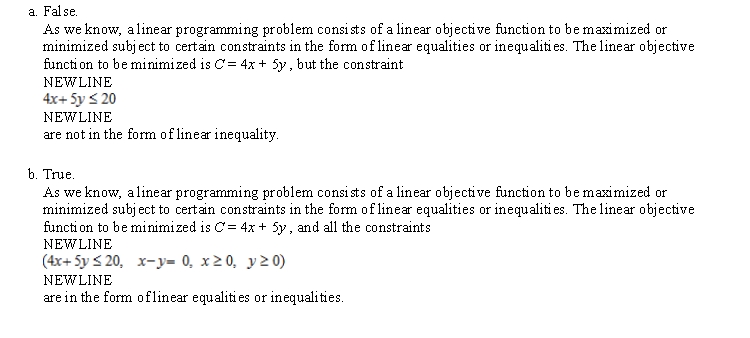Determine whether the statement is true or false. If it is true, explain why it is true. If it is false, give an example to show why it is false. The following problem is a linear programming problem.
Minimize 
 subject to:
subject to:  x - y = 0
x - y = 0 

Definitions:
Q43: Determine graphically the solution set for the
Q99: Student Painters, which specializes in painting the
Q103: Solve the following linear programming problem by
Q106: Solve the linear programming problem by the
Q111: Write a system of linear inequalities that
Q113: Refer to the accompanying figure and determine
Q121: How many days will it take for
Q170: Find the optimal (maximum and minimum) values
Q238: Writing a matrix equation that is equivalent
Q297: Compute the product.<br> <img src="https://d2lvgg3v3hfg70.cloudfront.net/TB6027/.jpg" alt="Compute the